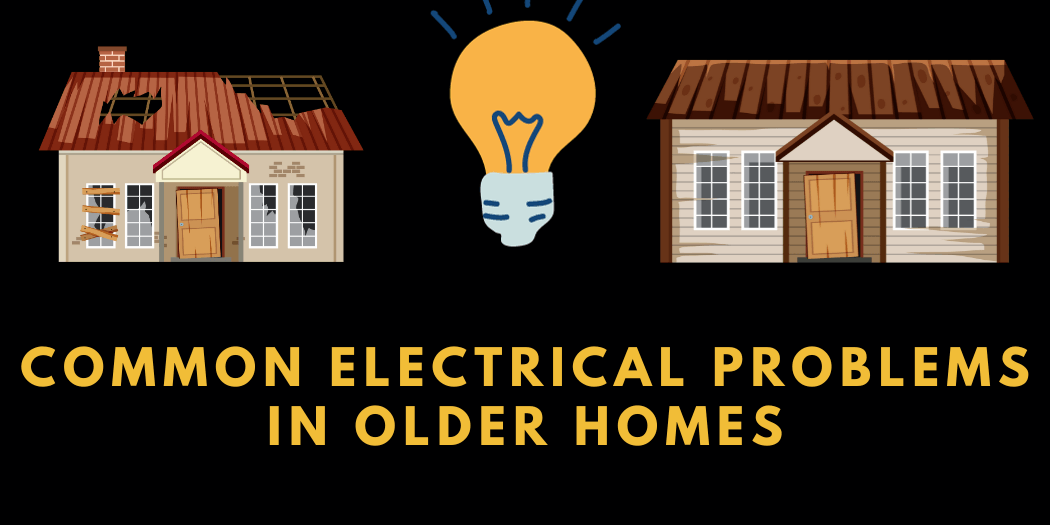Common Electrical Problems in Older Homes: And How to Address Them
When it comes to older homes, there’s a unique charm and character that many people find irresistible. However, along with that charm often come some not-so-charming electrical issues.
Older homes may have outdated electrical systems that can lead to safety hazards and inconveniences. In this comprehensive guide, we’ll explore common electrical problems in older homes and provide practical solutions to address them.
Whether you own an older home or are considering purchasing one, understanding these issues is essential for a safe and comfortable living environment.
Common Electrical Problems in Older Homes and How to Address Them
Older homes have their own stories to tell, and they’ve seen generations come and go. While they can be filled with character, they may also be filled with outdated electrical systems that don’t meet modern safety standards and electrical demands. Identifying and addressing these problems is crucial to maintain the value and safety of your older home.
1. Outdated Wiring
Problem: One of the most common electrical issues in older homes is outdated wiring, such as knob-and-tube or aluminum wiring. These types of wiring can be unsafe and prone to damage.
Solution: Consider rewiring your home with modern copper wiring. It’s essential to hire a licensed electrician to handle this task properly.
2. Insufficient Outlets
Problem: Older homes often lack enough electrical outlets to accommodate the numerous devices we use today, which can lead to overloading and safety hazards.
Solution: Add more outlets or consider installing power strips with surge protection to meet your power needs safely.
3. Overloaded Circuits
Problem: Overloaded circuits can cause power outages and even electrical fires, especially in older homes with outdated electrical systems.
Solution: Redistribute the electrical load or add additional circuits to balance the power usage throughout the house.
4. Fuse Boxes
Problem: Many older homes still use fuse boxes, which are less convenient and less safe than modern circuit breakers.
Solution: Upgrade your electrical panel to a circuit breaker system for improved safety and convenience.
5. Ungrounded Outlets
Problem: Older homes often have ungrounded outlets, which can be dangerous for both you and your electronic devices.
Solution: Hire an electrician to replace ungrounded outlets with grounded GFCI outlets to enhance safety.
6. Flickering Lights
Problem: Flickering lights may be indicative of loose wiring or electrical issues in the home.
Solution: Have an electrician inspect the wiring to identify and fix the root cause of the flickering lights.
7. Outdated Switches and Receptacles
Problem: Old, worn-out switches and receptacles can be both aesthetically unpleasing and potentially unsafe.
Solution: Replace old switches and receptacles with new ones that meet modern safety standards and are more energy-efficient.
8. No Ground Fault Circuit Interrupters (GFCIs)
Problem: GFCIs are crucial for protecting against electrical shock, especially in wet areas like kitchens and bathrooms.
Solution: Install GFCIs where needed to ensure the safety of your family.
9. Knob-and-Tube Wiring
Problem: Knob-and-tube wiring is outdated and can pose a significant fire hazard if not replaced.
Solution: Hire a licensed electrician to assess and replace knob-and-tube wiring with modern, safe alternatives.
10. Electrical Panel Upgrades
Problem: Older homes may have electrical panels that can’t handle the electrical demands of modern living.
Solution: Consider upgrading your electrical panel to accommodate today’s electrical needs safely and efficiently.
11. Insulation and Wiring
Problem: In some older homes, insulation may be in direct contact with wiring, creating a potential fire hazard.
Solution: Ensure proper clearance between insulation and wiring to prevent overheating and fires.
12. Aging Appliances
Problem: Older homes often have aging appliances, which can pose electrical safety risks due to wear and tear.
Solution: Regularly inspect and maintain appliances or consider upgrading to newer, more energy-efficient models.
13. Inadequate Grounding
Problem: Insufficient grounding can increase the risk of electrical shock and damage to electronic equipment.
Solution: Have a licensed electrician assess your home’s grounding system and make necessary improvements.
14. Aluminum Wiring
Problem: Some older homes may have aluminum wiring, which can pose safety hazards due to oxidation and overheating.
Solution: Replace aluminum wiring with copper wiring to enhance safety and reduce the risk of electrical issues.
15. Consult a Professional
Problem: Many electrical issues in older homes are best addressed by a professional due to their complexity and safety concerns.
Solution: Whenever in doubt or when dealing with potentially hazardous issues, it’s advisable to consult a licensed electrician who can provide expert guidance and solutions.
Final Thoughts
Owning an older home can be a rewarding experience, but it’s essential to be aware of and address common electrical problems that may arise.
Neglecting these issues can lead to safety hazards, inconvenience, and even property damage. By identifying these problems and taking the necessary steps to address them, you can ensure that your older home remains a safe and comfortable place to live for many more years to come.
Always consult a licensed electrician when dealing with electrical issues in older homes to ensure the highest level of safety and expertise.







